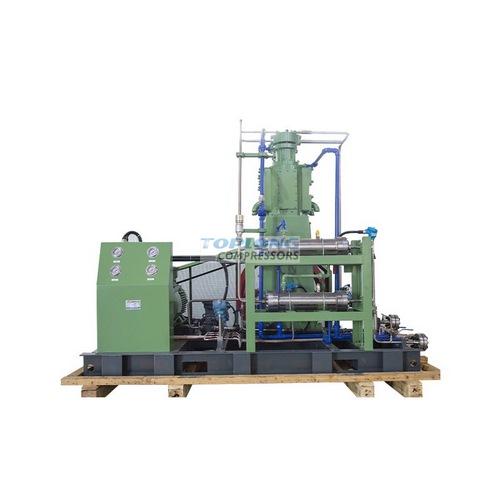The difference between an air compressor and an oxygen compressor
The difference between an air compressor and an oxygen compressor
Maybe you only know the air compressor because it is the most widely used type of compressor. However, oxygen compressors, nitrogen compressors, and hydrogen compressors are also common in compressors. This article highlights how to help you understand the differences between which type of compressor and oxygen compressor you want.
You'll know:
What is an air compressor?
What is an oxygen compressor?
The difference between an air compressor and an oxygen compressor
What is an air compressor?
An air compressor is a device that stores power (using an electric motor, diesel or gasoline engine, etc.) in pressurized air (i. e., compressed air). By one of several methods the power of the air compressor is increasingly compressed air, then, in the tank maintained until called put into use. The compressed air energy contained in can be used in a variety of applications, using the kinetic energy of the air because it is released and the container is down. When the tank pressure and reaches its lower limit, the air compressor turns and rethe tank. Since it can be used for any gas / air while the pump in liquid operation must be differentiated from the pump.
What is an oxygen compressor?
An oxygen compressor is used to pressure oxygen and provide it. Oxygen is a violent combustion agent that can easily cause combustion and explosion.
The difference between an air compressor and an oxygen compressor
The air compressor presses the air directly into the container. The air compressed by the air compressor consists of two parts: 78% nitrogen; 20-21% oxygen; 1-2% water vapor, carbon dioxide and other gases. The air in the "component" does not change after compression, but the size of the space of these molecules occupies.
The oxygen compressor contains oxygen that is compressed directly by oxygen. The compressed gas is highly pure oxygen and occupies little space.
The difference between an oxygen compressor and an air compressor is to ensure that it is oil-free.
1. All parts touching the oxygen contact in the screw air compressor must be strictly skim and skim before being loaded. Clean with tetracloride to avoid exploding carbon.
When replacing or repairing parts that will come in contact with compressed oxygen. 2. Maintenance personnel must wash their hands first. The table and spare parts cabinet must also be cleaned and oil free.
3. The amount of lubricating water of the oxygen compressor should not be too small or moisture to avoid sharp temperature rise in the cylinder; the cooling water for the blasting cylinder and cooler must be lower than the hyperbaric oxygen flow.
4. When the pressure change of the oxygen compressor is abnormal, the relevant valve should be replaced or repaired at time to avoid the rising cylinder temperature.
5. Pay attention to the working state of the shoe upper and the letters of the middle seat of the sealed oxygen compressor. If the sealing conditions are not good, the filling port can be used at time to prevent the oil from being lifted to the oxygen compressor by the piston rod cylinder.


